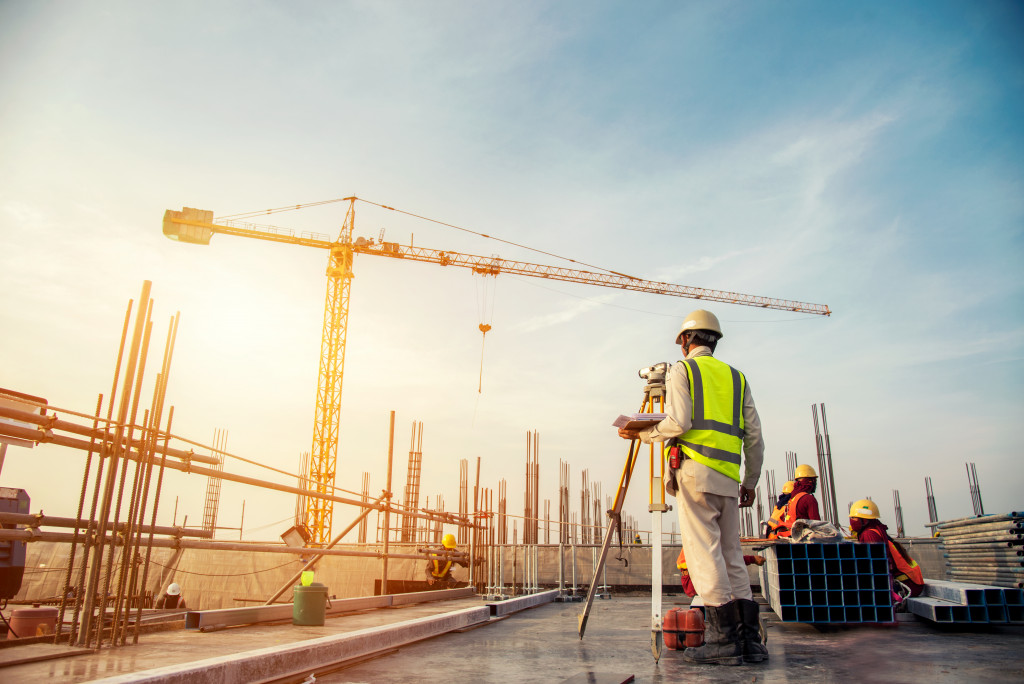• Secure all site access points to deter unauthorized personnel and potential vandalism or theft.
• Erect physical security such as fences or walls with high-quality materials to create a secure perimeter.
• Check for hazardous materials and designate areas for workers to rest and use restroom facilities.
• Use protective gear, secure heavy machinery, protect the flooring, and conduct regular inspections.
• Remove all debris, dispose of flammable materials, and check that all electrical connections are working properly after completing the project.
As a construction business owner, you know how important it is to protect your job site before, during, and after a project. It gives your clients and potential ones the impression that you are serious about your work and can be trusted to deliver the best results.
When done correctly, protecting your worksite ensures you can work safely and efficiently while minimizing liability risk. Explore some best practices for keeping your job site secure and your team safe.
Before You Start Work on the Jobsite
Before you begin any project on a site, it’s important to ensure it is ready for construction. These steps include:
Securing the Perimeter
Ensure all access points into the site are locked or blocked with proper signage. This includes back gates, pedestrian walkways, and other potential entry points for unauthorized personnel. Having these areas secured will also discourage vandalism and theft.
Erecting Physical Security
Fences and walls are two of the most common types of physical security used in construction sites. They can create a secure perimeter or keep out unwanted visitors, such as wild animals or trespassers. Use secured and high-quality materials such as chain-link fencing, metal gates, and concrete walls built to last.
Checking for Hazardous Materials
Be sure to check for any hazardous materials, such as asbestos or lead paint, that may pose a risk to workers onsite. These are usually present in older buildings and need to be handled appropriately. Have these materials removed safely and professionally by an experienced contractor if necessary.
Designating Areas for Workers
Establish designated areas for workers to rest, eat lunch/dinner, and use restroom facilities to limit distractions from outside sources. This will also help keep workers safe if there is an emergency onsite. Additionally, it keeps them away from hazardous materials, sharp edges, and other potential hazards.

Protecting Your Jobsite During Construction
You must take additional steps during construction to ensure a safe working environment. Here are some tips:
Secure Heavy Machinery
If you are using heavy machinery at a site, make sure it is securely fastened with chains or straps, so it doesn’t become a hazard if it were to move unexpectedly during operations. Installing protective guards or shields over any moving parts is also advisable to further prevent injuries.
Protect the Flooring
Floor protection during construction is one of the most important steps to protect floor surfaces. Use floor protection such as cardboard sheets, plastic sheeting, or floor mats to keep dust, dirt, and debris from damaging floor surfaces. This will also help reduce the time required to clean up after a project. It also protects the surface from damage which can lead to costly repairs.
Use Protective Gear
All workers should wear appropriate protective gear (such as hard hats) while working onsite to prevent head injuries from falling objects or debris. If working on high surfaces, workers should also wear harnesses for safety.
Schedule Regular Inspections
Have an independent third party conduct regular inspections of worksites to look for any potential hazards or unsafe conditions before they become an issue for workers onsite. Issues such as faulty wiring, unstable scaffolding, and improperly used tools should be identified and rectified quickly and efficiently.
After the Project is Completed
Once a project is finished, it’s important to do one final check of the site to ensure everything has been left in a safe condition for future workers or visitors. Here are some tips:
Clean Up and Remove Debris
Ensure all debris, materials, and tools are cleared from the site. This will help reduce the risk of injuries or other accidents due to someone tripping over something left behind. This could be anything from unused lumber to discarded nails.
Dispose of Flammable Materials
Flammable materials such as solvents, paints, and other chemicals must be disposed of properly. Ensure they are placed in an approved container and taken offsite for safe disposal. This will prevent any potential fire hazards from occurring on the job site.
Check All Electrical Connections

Make sure that all electrical connections have been tested and are working properly. This includes checking for any exposed wiring or faulty outlets, which could cause serious accidents if left unchecked. Also, check if all connections work and do not pose fire hazards.
Securing a construction project is essential to the success of a project and protecting your business. These tips help ensure your job site is secure before, during, and after a project. Following these best practices can protect your workers and build trust with your clients.

